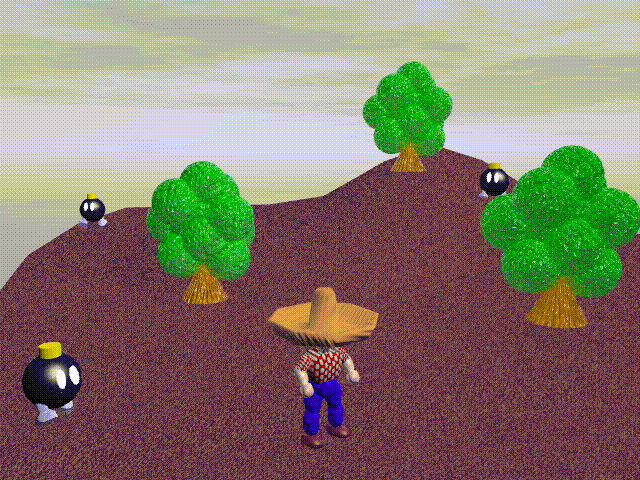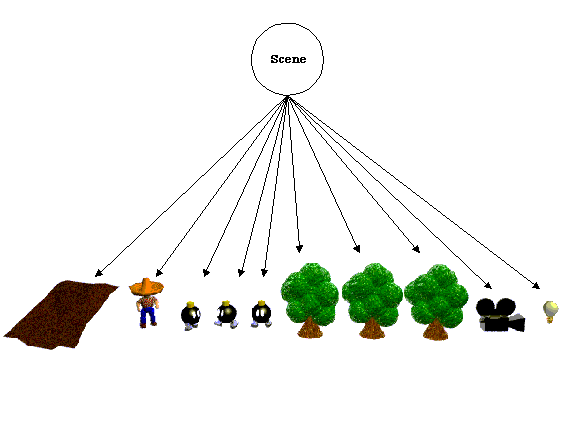
Figure A: Scene in a game
Consider one scene in a game, as shown below. When considering a single scene in a game, it is realistic to think of it as a slightly expanded cut from a movie, as "a conglomeration of various land-forms and characters arranged on the map of a closed game-world." This is because, unlike a movie which flows in a determined sequence within a determined time, when considering a scene in a game, a variety of events are considered dependent on the interplay between the user and the developer.

Figure A: Scene in a game
When a scene like the one above is played back in a game application, the objects that are to appear in the scene are rendered, various animation is played, and an operation occurs which simulates how the various objects interact. In the case of rendering, in order to improve efficiency, a display list is constructed which is optimum for the geometry engine and rendering system of the hardware. Preset animation data is played according to the circumstances and the interaction between the objects themselves is used in the development of subsequent scenes.
The data configuration must be set up so as to accurately control the links between the various data in the application. In NIFF, the format is defined assuming that the data will be converted to an object-oriented data structure. Consequently, it is possible to convert the objects that create the above kind of scene into NIFF data and, from there, convert the data into an object-oriented data structure.
In the example just described, the links are made from nodes in the scene described above, to objects, such as the player character, opponent characters, tree characters, etc., to the light, to a camera, and to the environment settings which set the video mode and other characteristics. that are unique to Nintendo 64.

Figure: Links from the scene to objects, lights, camera, and environment settings